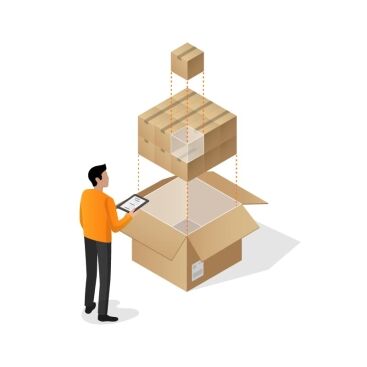ESG, warehouse management automation, and hidden savings
What’s in the box?
Customers are very invested in what they order. How cheap can they purchase it? How fast can they get it? Beyond frustration with poorly packed orders, they don’t think too much about the packaging. For shippers though, strategic carton optimization is a critical aspect of warehouse management and financial efficiency.
The underrated impact of carton optimization
Sub-optimal cartonization is a complicated problem that can have a heavy influence in the areas of ESG, warehouse management automation, and hidden savings:
- Is the carton the right size?
- Can multiple orders be consolidated?
- Are the SKUs going into the box fragile, nestable, or foldable?
- Does it meet carrier requirements?
- Are the materials recyclable, sustainable, and reusable?
Just a couple of years ago, carton optimization — the automated process of selecting the correct box for any given shipment — was helpful for firms trying to find incremental savings. It wasn’t a flashy subject, and many didn’t prioritize it when building out their supply chain. As a result, cartonization technology was simple.
Like many things, nice-to-have features are now table stakes when looking to differentiate in a tough economy. Some large ecommerce brands are even prioritizing carton optimization as a strategic priority in their annual shareholder letters.
Exceptional becomes essential – what changed?
Most importantly, costs rose dramatically during the pandemic, making warehouse management and automation essential:
- Major parcel carriers created new fees and surcharges. They recently instituted the highest General Rate Increase in recent years.
- The cost of corrugated cardboard hit an all-time high last year, and hasn’t come back down.
- Labor is more expensive, and more fleeting; tribal knowledge (and customer trust) are lost when there’s high turnover in the warehouse management teams.
Psst! Your Scope 3 emissions are showing…
Beyond costs, the environment is an increasing concern. US businesses brace for SCOPE 3 (aka, value chain emissions) reporting legislation. Many are realizing how much of their carbon footprint comes from transportation necessary to warehouse management operations.
Customers are noticing, too! They’re posting pictures of badly packed shipments on social media to both shame shippers and create awareness of ESG values.
With a dearth of options available, many ecommerce shippers are taking a hard look at the actual parcels they’re sending out the door and discovering huge opportunities for optimization.
Related article: Warehouse management tech’s new role in ESG-friendly businesses
A deceptively deep problem
Traditional carton optimization planning technology has been fairly straightforward in its premise: “Is the volume of the SKUs in this shipment less than the volume of my boxes?” While this can lead to a “good enough” answer, cost pressure demands a more nuanced approach.
Advanced cartonization software, by contrast, acknowledges that many disparate factors affect packing efficiency in warehouse management operations. For example:
- Where are the breakpoints in our carrier rate tables for each service type?
- Is splitting a shipment into multiple boxes cheaper for this shipment?
- Does the labor cost suggest I should use fewer boxes?
- What’s the implication of the cost of the packaging material?
These are not simple questions to answer all at once. But for cost-efficient packing, they’re just the tip of the iceberg.
Carton optimization – it’s not just packing efficiency
There is a lot of money in packing efficiently. While carton optimization software is most often implemented for financial benefits, that’s not the only reason to invest:
- Environmental, Social, Governance (ESG): Consumers have become incredibly conscious of not only what they purchase, but how it’s procured. A growing category of “unboxing” videos on social media seek to shame retailers for careless packing jobs. With SCOPE-3 disclosure rule changes, wasting material and supply chain capacity is quickly becoming indefensible.
- Warehouse Management Automation: Worker efficiency can be improved by automating carton selection. The packing process runs smoothly and eliminates both time and material waste. This improves worker job satisfaction in warehouse management teams with large variances in packaging formats.
- Hidden Savings: Implementing modern carton optimization has benefits outside the four walls. The downstream effects are myriad: fewer returns due to damage, happy customers, and leverage in carrier contract negotiations are just a few benefits.
Protect margins, delight customers, encourage brand loyalty, and reduce worker frustration. What’s not to like?
Warehouse management meets cartonization meets OMS, simplified
That all sounds great, but how hard is a carton optimization platform to implement? It’s not.
Deposco’s Warehouse Management + Order Management platform and Paccurate are ready to go. Plug your Paccurate credentials into Deposco’s cloud WMS and OMS solution and you immediately benefit from Paccurate’s state-of-the-art carton optimization platform.
